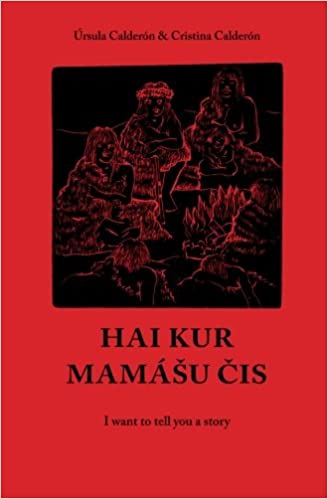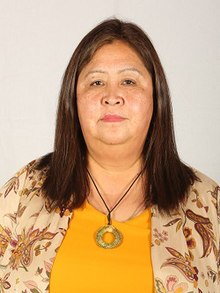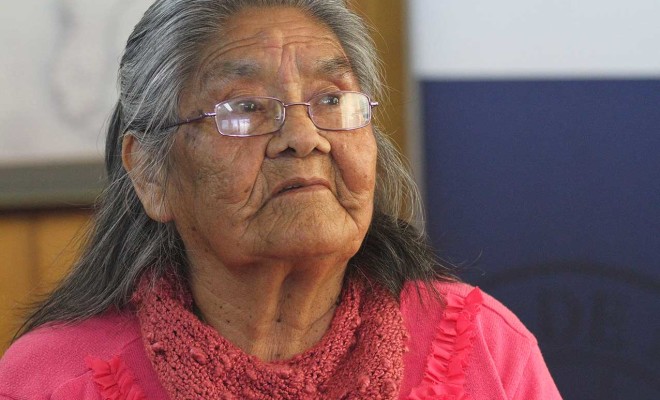Travelling on HMS Beagle in 1832, the English naturalist Charles Darwin was an early European observer of the inhabitants of Tierra del Fuego in the far south of Argentina and Chile:
‘Viewing such men, one can hardly make oneself believe they are fellow creatures, and inhabitants of the same world. At night, five or six human beings, naked and scarcely protected from the wind and rain of this tempestuous climate, sleep on the wet ground coiled up like animals.’
The Fuegians Darwin described with such astonishment were members of four nomadic groups who have inhabited Tierra del Fuego and the surrounding islands for more than 7,000 years. In the mid-19th century, there were an estimated 3,000 of them still living a nomadic life between land and sea.
Now the last descendant of one of these groups, the Yaghans, has died in Chile on 16 February 2022 at the age of 93.
Baptised by Anglican missionaries with the name of Cristina Calderón, at her birth on 24 May 1928 she was one of little more than a hundred Yaghans still living their traditional way of life, travelling between the southernmost islands in bark canoes, and living off seafood and any animals they could hunt.
Cristina was the daughter of Lanixweliskipa and her husband Akacexanincis, Yaghans who changed their names to Carmen Harban and Juan Calderón.
Both her parents died before she was five, and Cristina was taken in by her grandparents, only to see her grandfather killed in a brawl by a ‘Spaniard’. Following this, she and her sister Julia were raised by an aunt in Bahía Mejillones on Navarino Island, south of the Beagle Channel.
A long life of hardship followed. Yaghan tradition dictated that she was married off in adolescence to a much older man whom she had never met, in order to guarantee that she would be fed and clothed.
After his death when she was twenty, she married again, but it was not until 1964 that she married Teodosio González, something she said ‘she had wished for even as a girl’, and they remained together until he died in 2009.
The extinction of the Fuegians
Despite surviving and adapting to the harsh natural surroundings, it took little more than 100 years of contact with Europeans for these indigenous Fuegian groups to become almost extinct.
In 1883 for example, four ships from Argentina brought the measles virus, against which Fuegians had no immunity, and as many as one third of the indigenous population is thought to have been wiped out.
The Fuegians continued to suffer badly from discrimination and worse – until well into the 20th century white colonists of Patagonia arranged shooting parties targeting the indigenous groups, as they took over their lands for farms and mining.
Abuela Cristina
But Cristina tenaciously continued to uphold the customs of her indigenous way of life. She was an expert in the traditional handicrafts of the region, making rush baskets and knitted woollen socks, which provided her with a small income. As she grew older, ‘Abuela Cristina’ worked with her grand-daughter Cristina Zárraga to record a dictionary and grammar of her Yaghan language, and to give language classes.

In her last years, Cristina Calderón became something of an institution. Living in a wooden house donated by the Chilean government near the town of Puerto Williams, she was declared a ‘treasure for the whole of humanity’ by UNESCO, and was frequently visited by journalists and film-makers, including the celebrated German director Werner Herzog.
They also compiled a book of Yaghan legends and stories called Hai Kur Mamashu Shis (I Want to Tell You a Story), a memoir of her upbringing in the far south of the continent: the community’s shamans and elaborate burial ceremonies, hunting in canoes, wearing shoes made of guanaco fur, running through the forests out of fear of Hannus, the ape-like giant who preyed on humans.

As a further sign of evolving attitudes to Chile’s native populations, in 2021 her daughter Lidia González was elected to represent the Yaghan people in the ongoing Chilean Constitutional Convention, called to draw up a new national constitution.
Cristina Calderón died at the age of 93 in hospital at Punta Arenas of a very modern illness: Covid-19. After her death, there are said to be only some 50 people remaining in Chile who regularly use the Yaghan language. According to the Living Tongues Institute based in Oregon, United States there are some 600 indigenous languages spoken in Latin America, and perhaps 4,000 worldwide, many of them in danger of dying out.

